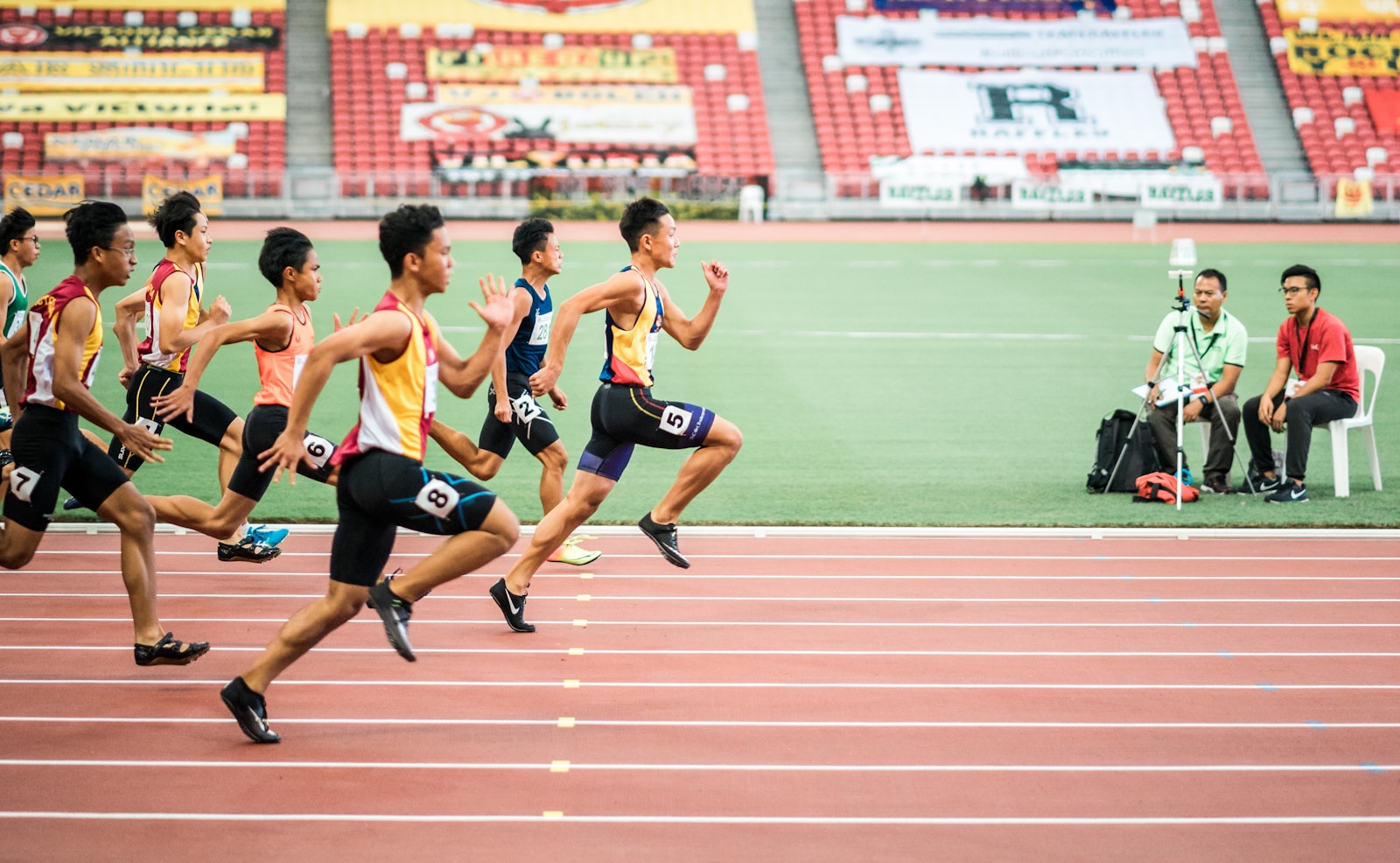How Do You Say Track and Field in Spanish: Complete Guide
Imagine you’re at a bustling international sports event, cheering for your favorite athletes. The energy’s electric, and you strike up a conversation with a fellow fan. Suddenly, they ask, “How do you say ‘track and field’ in Spanish?” You freeze, realizing you don’t know the answer. It’s a simple question, but it leaves you feeling a bit out of the loop.
Don’t worry, you’re not alone! Many of us have been in situations where language barriers create awkward moments. The good news? You can easily avoid this by learning a few key phrases. In Spanish, track and field translates to “atletismo”. Knowing this not only helps you connect with Spanish-speaking fans but also deepens your appreciation for the sport’s global community.
The Direct Translation: “Atletismo”
Wanna impress your Spanish-speaking friends at the next track meet? Just drop the word atletismo. That’s right, it’s the catch-all term for “track and field,” capturing everything from sprinting to javelin throws.
Breaking Down Atletismo
Ever wondered where atletismo comes from? It’s a blend of atleta (athlete) and the suffix –ismo, which turns it into a noun indicating a practice. So, atletismo literally refers to the practice of athletic activities. Pretty neat, right?
Meaning and Origin
The word atletismo traces back to the Greek athlētēs. Migrate that through Latin as athleta, and you get the Spanish term we use today. This lineage makes the term deeply rooted in history, connecting modern sports to ancient traditions.
Why It’s Not a Literal Translation
You might think “track and field” should directly translate to pista y campo. Technically, it does. But atletismo offers a more comprehensive scope, covering not just track and field but a broader range of athletic activities. It’s like having one word to rule them all!
Pronunciation Guide for Atletismo
Struggling to say atletismo? Don’t worry, here’s how: ah-tleh-TEES-moh. Keep it smooth and roll that “r” a bit. You’ll sound like a pro in no time.
Usage in Different Spanish-Speaking Countries
The beauty of atletismo? It’s universally understood across Spanish-speaking countries. Whether you’re in Spain, Mexico, or Argentina, this term bridges the gap, making it a staple in athletic conversations.
Country | Example Sentence |
|---|---|
Spain | Me encanta el atletismo en los Juegos Olímpicos. |
Mexico | ¿Vas a ver la competencia de atletismo hoy? |
Argentina | El atletismo es mi deporte favorito. |
So next time you’re catching up on sports in a Spanish-speaking country, you already know how to jump into the conversation. Cool, right?
Alternative Ways to Say Track and Field in Spanish

Let’s jump into the different ways to say “track and field” in Spanish. Each term offers unique perspectives and usage depending on context and region.
“Pista y Campo” – A More Literal Translation
Pista y campo directly translates to “track and field.” Pista means track, and campo means field. This term focuses on the sports’ components, making it a clear and straightforward choice. For instance, if you’re discussing a specific event like a track meet, using pista y campo keeps things simple and accurate. Many Spanish-speaking countries, including Mexico and Argentina, commonly use this term.
Regional Variations and Preferences
Different regions have their preferences, adding flavor to the language. In Spain, cancha sometimes refers to a sports track or field. But, pista is still more prevalent. Across Latin America, pista is the go-to term, whether you’re talking about sports or even a music track. It’s interesting how one word can serve multiple purposes, isn’t it?
Here’s a quick reference table for regional preferences:
Region | Preferred Term |
|---|---|
Spain | Pista / Cancha |
Latin America | Pista |
When to Use Each Term
When should you use atletismo over pista y campo? If you’re talking about the sport in general, go with atletismo. It emphasizes the athletic nature and covers all events under the track and field umbrella. For instance, “I love watching atletismo during the Olympics.”
On the other hand, for specific events or locations, pista y campo works best. Imagine saying, “The pista y campo facilities at this stadium are top-notch.” Being precise can make your conversation clearer and more engaging.
Remember, there’s no rigid rule. Context often dictates which term feels more natural. So, why not mix things up based on where you’re having that next big sports conversation? 🏅
Spanish Terms for Specific Track and Field Events
Learning the Spanish terms for specific track and field events opens doors to a richer understanding of the sport. Whether you’re watching the Olympics, working with athletes, or just a sports enthusiast, knowing these terms helps. Let’s explore the key Spanish vocabulary used in track and field.
Track Events (Pruebas de pista)
Track events, or Pruebas de pista, include various running races.
Sprints: “Carreras de velocidad”
Sprints, known as Carreras de velocidad, are all about fast bursts of speed. For instance, the 100 meters or 200 meters fall into this category. Picture Usain Bolt’s iconic races—they’re classic Carreras de velocidad. Want to sound like a pro? Next time you discuss sprinting events, use this term.
Long-distance: “Carreras de fondo”
Long-distance races, or Carreras de fondo, test endurance over longer distances, like the 5000 meters or marathon. Think of Mo Farah’s incredible stamina when he dominates the longer tracks. When you jump into conversations on marathons or cross-country events, throw in Carreras de fondo—it’ll resonate with Spanish-speaking fans.
Field Events (Pruebas de campo)
Field events, known as Pruebas de campo, include jumps and throws.
Jumps: “Saltos”
Jumps like the long jump, high jump, and triple jump collectively fall under Saltos. Imagine the awe-inspiring moment when Javier Sotomayor clears the bar—you’re witnessing an extraordinary Salto de altura (high jump). Mention Saltos in chats about athletes who seem to defy gravity.
Throws: “Lanzamientos”
Throws, or Lanzamientos, include events like shot put, discus, and javelin. Remember the impressive strength and technique of athletes like Valerie Adams hurling the shot put—they’re performing a Lanzamiento de peso. Use Lanzamientos to enrich discussions on these powerful displays of athleticism.
English Term | Spanish Term |
|---|---|
Track events | Pruebas de pista |
Sprints | Carreras de velocidad |
Long-distance | Carreras de fondo |
Field events | Pruebas de campo |
Jumps | Saltos |
Throws | Lanzamientos |
Connecting with these terms in Spanish can heighten your appreciation for the beautiful nuances in track and field. Whether watching or participating, sprinkling your vocabulary with these phrases adds depth to your sports experience.
Using “Track and Field” in Spanish Sentences

Exploring how to say “track and field” in Spanish opens up exciting ways to connect with Spanish-speaking sports fans and athletes. You can enrich your conversations by using el atletismo or pista y campo confidently.
Example Phrases and Dialogues
Adding specific phrases to your vocabulary helps make your Spanish sound more natural. Here are some examples to get you started:
English Sentence | Spanish Sentence |
|---|---|
Jack excelled at track and field in high school. | Jack destacaba en atletismo en el colegio. |
Track and field is just as popular as football at our school. | En nuestra escuela, pista y campo es tan popular como el fútbol americano. |
Imagine telling a friend about your own experiences:
English Sentence | Spanish Sentence |
|---|---|
I’m part of my school’s track and field team. | Estoy parte del equipo de atletismo de mi escuela. |
Talia is good at most sports, but she truly excels in track and field. | Talia es buena en la mayoría de los deportes, pero realmente sobresale en pista y campo. |
Common Mistakes to Avoid
Sometimes, minor errors can make a big difference in how your Spanish is understood. Here are some pitfalls to watch out for:
- Spelling Errors: Misspelling atletismo or pista y campo can be misleading. Double-check your writing.
- False Friends: Avoid similar-sounding words that don’t mean the same thing.
- Verb Conjugation: Make sure you’re using the correct forms. For instance, destacaba (he/she excelled) vs. destaca (he/she excels).
- Sentence Structure: Spanish structure differs from English. Practice structuring sentences correctly.
Tips for Natural-Sounding Conversations About Track and Field
Want to sound like a native? Here are some tips:
- Use the correct verbiage when talking about athletes. For example, say “el/la atleta” for “the athlete“.
- Blend in specialized terms. Instead of just “running” use “carreras de velocidad” for “sprints“.
- Ask questions: “¿Has competido en atletismo?” which means “Have you competed in track and field?”
- Engage in practice conversations. For instance, practice with friends or use language-learning apps.
These tips can make discussing el atletismo more engaging and natural.
Conclusion: Mastering Track and Field Terminology in Spanish
By familiarizing yourself with key Spanish phrases and terms related to track and field you’re not just overcoming language barriers but also building stronger connections with Spanish-speaking athletes and fans. Whether you’re talking about “atletismo” or specific events like “Carreras de velocidad” your efforts to use the correct terminology will be appreciated.
Remember to practice using these terms in sentences and conversations to sound more natural. Avoid common mistakes and focus on the nuances of the language to enhance your communication skills. With these tips you’ll be well on your way to mastering track and field terminology in Spanish and enriching your international sports experiences.
Frequently Asked Questions
What is the Spanish translation for “track and field”?
The Spanish translation for “track and field” is “atletismo.”
Are there different regional terms for track and field in Spanish?
Yes, another common term is “pista y campo,” which is used interchangeably based on the region and context.
How do you say “sprints” in Spanish?
“Sprints” in Spanish is “Carreras de velocidad.”
What is the Spanish term for “jumps” in track and field?
The Spanish term for “jumps” is “Saltos.”
Can you give an example of using “track and field” in a Spanish sentence?
Sure! “Estoy entrenando para las competencias de atletismo este fin de semana.” (I am training for track and field competitions this weekend.)
What mistakes should I avoid when talking about track and field in Spanish?
Avoid using incorrect or non-specialized terms. Always use terms like “atletismo” or event-specific words like “Carreras” for races and “Lanzamientos” for throws.
How do I make my Spanish conversations about track and field sound more natural?
Use common phrases and practice regularly with native speakers. Incorporating sports-specific vocabulary and correct verb usage will also help.
Why is it important to use the correct terms for athletes and events in Spanish?
Using the correct terms demonstrates respect and understanding of the sport, which helps in building connections with Spanish-speaking sports fans and athletes.






